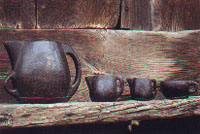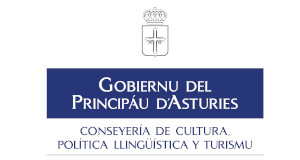Household Furniture And Costume
- Inicie sesión o rexístrese pa espublizar comentarios





Furniture did not abound in the typical Asturian household. In the kitchen we could find the masera, a piece of furniture with a lid in which batches of loaves sufficient for a fortnight were stored and where the daily bread was kept, the espetera or ferraderu, from which the truncated conical pails and copper pots were hung, while the arrudo or hooked stick upon which wooden jugs (zapiques) and other kitchen vessels (tarreñes) were hung was to be found in others; also common were the vasal or kitchen cupboard; the escañu or bench which went around the inside of the dwelling and which served as seat, table and bed; the tayuelos or three-legged stools. Amongst the wooden vessels was the already mentioned zapica, copita or peya, used for milk and cider; the salt and pepper pots with their screw-tops; the salt-mill; wooden bowls from which food was eaten with a wooden spoon; the desca or duerna for kneading pastry or peeling potatoes; staved buckets with wide, shining iron rims, like the iron from which the three-legged cauldron hung on chains (calamiyeres or pregancies) over the fire; not forgetting the trébedes into which the pan for frying potatoes was placed, the talo or hot plate with a handle on which cakes would be cooked wrapped in corn or fig-leaves, the chocolate pot with its grinder, the canxillón or copper drinking pot, and if the home llar) had not sufficient resources for lighting, small oil lamps also made of iron would be lit, and there would be besides all these copper cauldrons and vessels made from glass or other materials, the feridera or butter churn, the perforated cheese-store, etc.
In the rooms beds with hand-carved headboards and a clothes chest with its own jewelry box were the typical furnishings.
In terms of traditional dress it can be affirmed that we have a case of the typification of the latest form of dress, already recognised in its own time as distinguishing the inhabitants of our country. The centuries of splendour begin in the last quarter of the eighteenth century and continue to the middle of the nineteenth, at which point the traditional costume as day-to-day dress began gradually to disappear. It was a natural costume for the popular classes which, although possessing distinguishing characteristics, nevertheless had much in common with the common measure to be found in most of western Europe. With the passage of time, not having been supplanted by any other personalised form of dress, it will remain part and parcel of the Asturian festive ide









